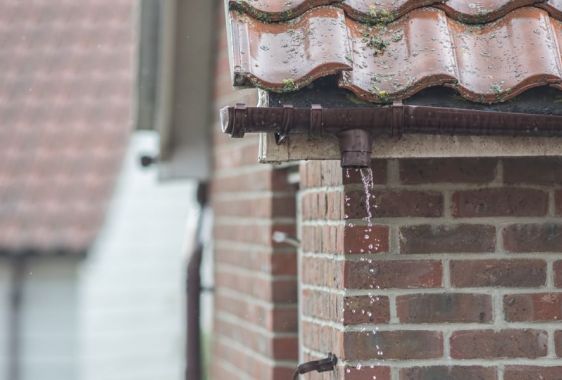
Naturally, damp problems in the home are a huge red flag to any interested buyers. Indeed, recent surveys have indicated that 75% of people reported they would be put off making an offer on a home that displayed evidence of damp.
Part of the problem is that damp is often misunderstood to begin with, so sellers feel they begin the process at a disadvantage. Today, our guest blog writer and damp specialist will try to clear things up for you by taking a look at how to identify different kinds of damp, and how best to resolve them to get your home looking its best before you put it on the market.
Condensation
Our experience has taught us that people underestimate the effects that condensation can have. Many see unsightly damp patches appearing on walls, peeling wallpaper and mould growth, and automatically assume that their property is under attack from a more ‘serious’ form of damp. This is a mistake however, because condensation can not only cause these defects, but is in fact the most common cause of damp problems!
You will be relieved to find that alongside being the most common cause of damp problems, condensation is frequently very easy to solve and rarely requires professional help. Following our free and easy advice will help you to eradicate most condensation issues:
- Introduce a source of ventilation to the property by opening a window
- Dry clothes outdoors rather than inside
- Ensure airways, vents and air bricks are clear and unblocked
- Use your thermostat to maintain a constant temperature in the home
If you have introduced the above measure yet still find that your condensation problems remain then you may wish to consult an air ventilation specialist about installing a ventilation system to flush out the damp, condensation causing air that is trapped in your home.
Rising damp problems
Perhaps the most infamous of all damp problems, if rising damp is included in the home report then buyers are unlikely to follow through with the purchase unless some form of agreement is made on who will pay for the required repairs.
Rising damp has become a controversial issue due to its frequent misdiagnosis by unqualified or inexperienced surveyors. That is why we would always recommend that suspected rising damp problems are examined by a qualified damp proofing surveyor in order to determine the exact cause of the issue.
True cases of rising damp always require remedial treatment because it means the property’s damp proof course has failed. This failure allows groundwater to be drawn up into the home through capillary action and will only deteriorate unless repairs are made. The most common repair method involves injecting a chemical remedial damp proof course into the lower level of affected rooms.
Penetrating Damp
Penetrating damp is the collective name given to damp problems that stem from defects in the building such as leaking roofs, obstructed and choked up gutters, and cracks in the external render that allow driving rain to pass from the outside of the building and into the home.
It makes sense to try and address these issues before the selling process begins. Depending on the severity of the repairs needed, you may be able to conduct them yourself or you may require the services of a property professional. To help fortify the house against future penetrating damp issues then you may wish to consider applying a weather protection coating to the exterior of the property.
Conclusion
We hope you found the above guide helpful, however, we understand that not all damp problems are quite as easy to identify and rectify before your home is put up for sale.
If you feel you need to consult with a professional damp specialist in order to get started repairing your damp issues, then we would strongly advise that ensure you are dealing with a Property Care Association qualified and experienced company. As the trade body for the industry they can make sure that their members’ services have been tested and verified to be of the highest industry standard.
Guest blog supplied by Paul Lawless of property preservation specialists Peter Cox.
